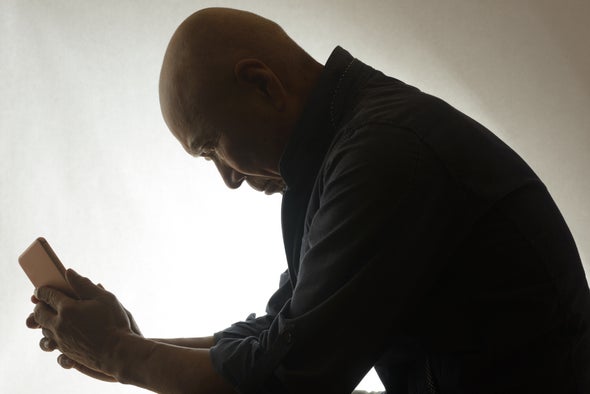My research and work on what we call “racial microaggressions” began through a series of lifelong experiences and observations of interpersonal racial encounters. For example, I am a second-generation Asian American, born and raised in the U.S. Yet despite that fact, I receive constant compliments for speaking “good” English. On crowded New York City subway trains, with all seats taken, I noticed that there would always be an empty one next to a Black passenger. These examples and countless other incidents are racial microaggressions.
Microaggressions are the everyday slights, insults, put-downs, invalidations and offensive behaviors that people of marginalized groups experience in daily interactions with generally well-intentioned people who may be unaware of their impact. Microaggressions are reflections of implicit bias or prejudicial beliefs and attitudes beyond the level of conscious awareness. Social psychologists have studied implicit bias for decades, along with the role it plays in human behavior. Almost any marginalized group can be the object of microaggressions. There are racial, gender, LGBTQ and disability microaggressions that occur daily toward these groups.
Most individuals who commit microaggressions view themselves as moral and decent human beings who never would consciously discriminate against another person. Yet it is important to acknowledge that none of us is immune from inheriting the racial, gender or sexual orientation biases of our society. Let us return to the two opening examples to understand more fully the manifestation, dynamics and impact of microaggressions.
Microaggressions often contain a “metacommunication” or hidden message to the target, which reveals a biased belief or attitude. Although the perpetrator believes that he or she is praising me for speaking good English, the underlying message to me is, “You are a perpetual foreigner in your own country. You are not a true American, because true Americans are light-skinned.”
The reluctance to sit next to Black people on the subway is a message that “you are to be avoided because you are potentially dangerous, a criminal or up to no good.” Many of my Black friends tell tales of how they enter an elevator with a single white female and how she tenses up, clutches her purse more tightly and moves away in fear.
Microaggressions often convey to targets the message that they are foreigners, criminals, dangerous, a threat or subhuman. Our research labels these messages as themes: for Asian Americans and Latinx Americans, that you are a perpetual alien in your own country; for Black people, that you might be a criminal; for people who identify as LGBTQ, that you’re a sinner; and if you’re a woman, that you can be sexually objectified.
The saying “sticks and stones may break my bones, but words will never hurt me” expresses a belief that microaggressions are harmless, small, trivial and insignificant. Critics of microaggression theory believe that we are “making a mountain out of a molehill” and that such incidents are no different from the everyday incivilities that a white person might experience from a rude clerk. Our research, however, reveals major differences that account for their greater harmful and detrimental impact on people of color:
- Microaggressions are constant and continual in the life experience of people of color. They experience these offensive behaviors every day from the moment they awaken in the morning until they go to sleep at night and from the time they are born until they die.
- Microaggressions are cumulative, and any one offense or put-down may represent the straw that breaks the camel’s back.
- Microaggressions are constant reminders to people of color that they are second-class citizens.
- Microaggressions are energy-depleting and lead to the concept of “racial battle fatigue.
- Microaggressions symbolize past historic injustices, such as the enslavement of Africans, the taking away of land from the Indigenous people of this country, and the incarceration of Japanese Americans during World War II.
These distinctions have led psychologists to refer to everyday slights or indignities experienced by people of color as “death by a thousand cuts.” Far from being harmless and benign, microaggressions have a macro impact on targets. A whole body of research supports this conclusion. They increase stress in the lives of people of color, lower emotional well-being, increase depression and negative feelings, assail the mental health of recipients, impede learning and problem-solving, impair employee performance and take a heavy toll on the physical well-being of targets. Equally important are findings that microaggressions lower the standard of living of people of color and create inequities in employment, education and health care.
In closing, I share with you the words of Martin Luther King, Jr., from his “Letter from Birmingham Jail”: “We will have to repent in this generation not merely for the hateful words and actions of the bad people but for the appalling silence of the good people.” These words have led us to ask an important question: What can well-meaning allies and bystanders do to disarm and dismantle microaggressions they observe?
Our research team at Teachers College, Columbia University, has been studying and developing antibias education and training strategies called microinterventions. These are the everyday antibias actions that can be taken by targets, parents, significant others, allies and well-intentioned bystanders to counteract, challenge, diminish or neutralize individual and systemic expressions of prejudice, bigotry and discrimination.
We have been able to organize microinterventions into four strategic goals: (1) make the “invisible” visible, (2) educate the perpetrator, (3) disarm the microaggression, and (4) seek outside support and help. For those interested in our research venture, much of the information can be found in our 2020 American Psychologist article entitled “Disarming Racial Microaggressions: Microintervention Strategies for Targets, White Allies, and Bystanders.”
As King says, silence and inaction in the face of moral transgressions are complicity and collusion. As a society, each of us has a moral responsibility to take action against bias and bigotry.

